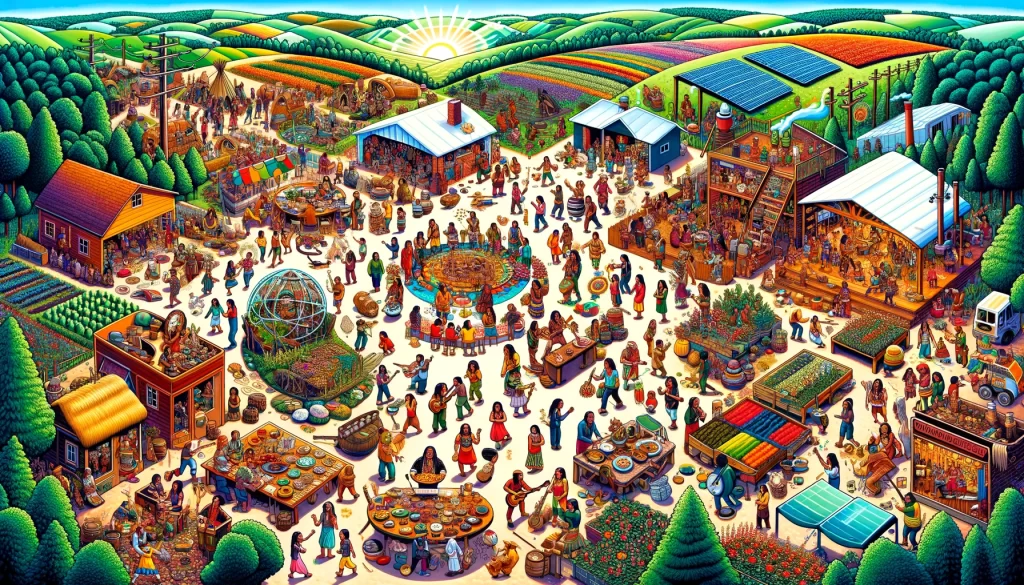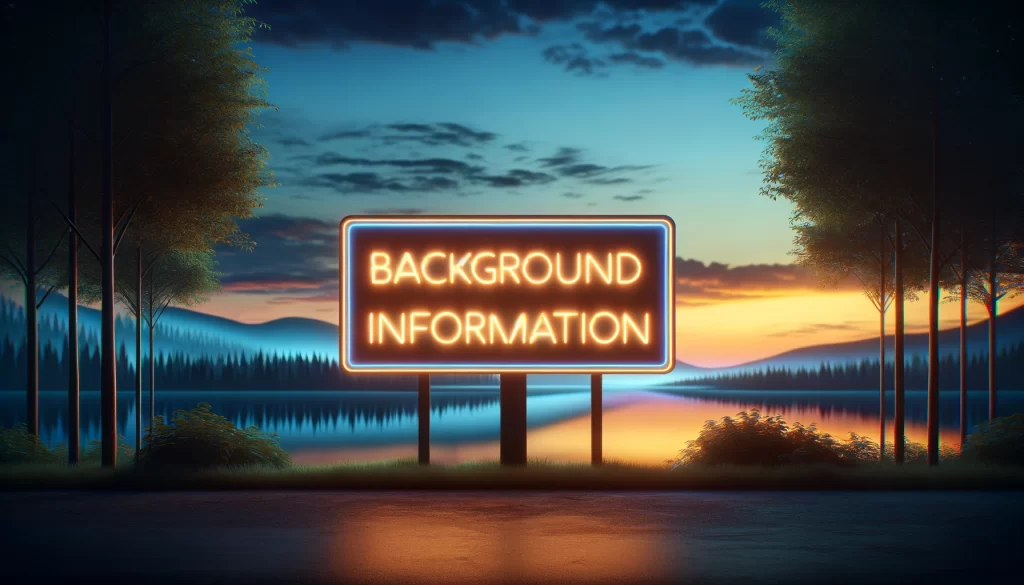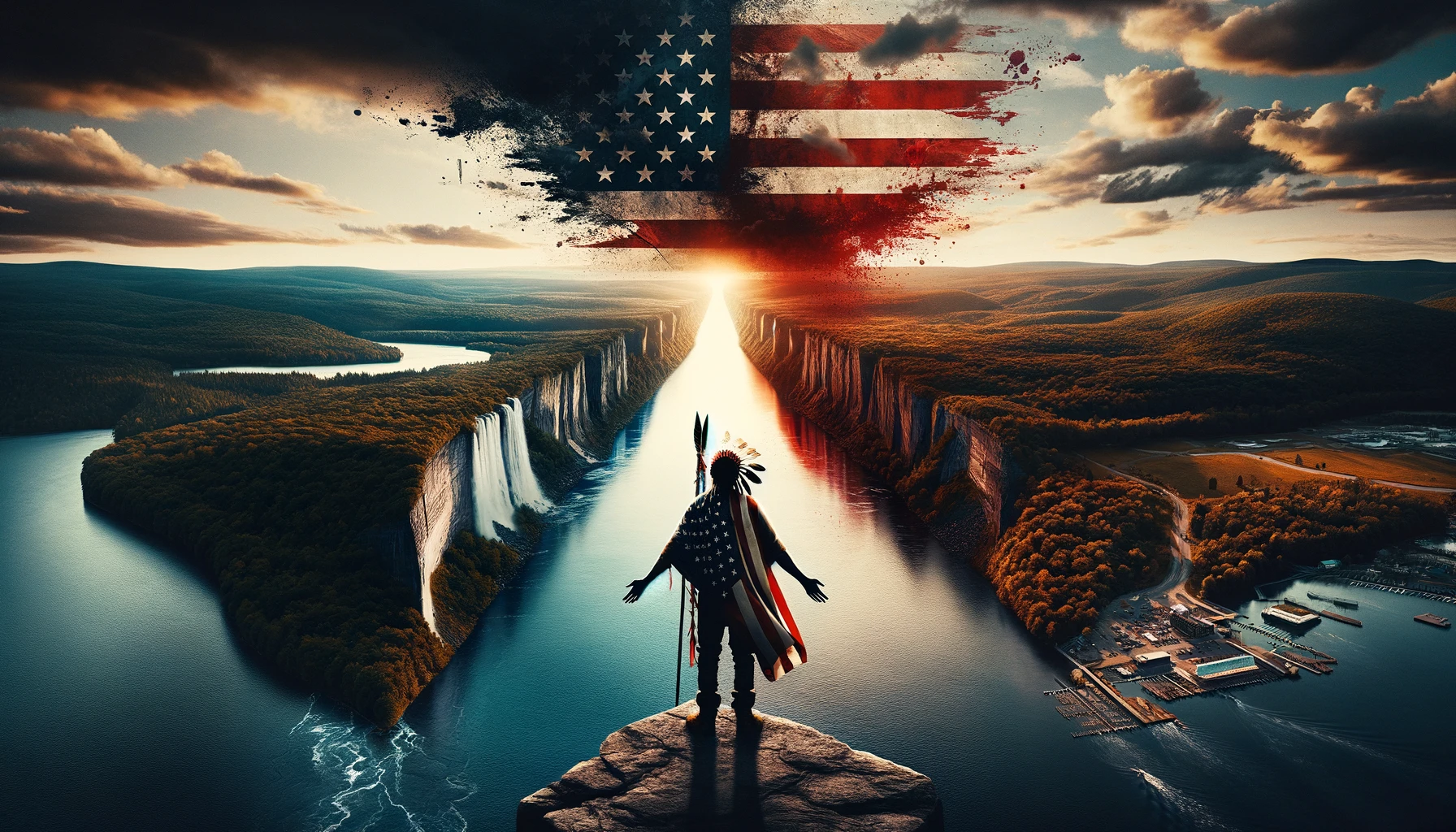A few years ago, Sidney Hill faced a moment many parents do: a tough question from his kid. His son had learned about the vast lands their ancestors, the Onondaga people, once roamed, now reduced to a mere 11 square miles south of Syracuse, New York. “How can that be?” his son asked, puzzled and hurt by the loss.
Sidney Hill wasn’t just any dad; he was Tadodaho, the Onondaga Nation’s spiritual leader, kind of like a guiding light for his people, tasked with safeguarding their past and lighting the path into their future. For decades, Hill and a small group of elders had been wrestling with how to right the wrongs of the past, especially the loss of their lands, piece by piece, to the State of New York.
But even with his deep understanding and responsibilities, Hill found it hard to explain the unfairness of it all to his son. It was a reminder that the younger generation deserved to know their history, no matter how complex or painful.
Hill tried to comfort his son, suggesting that the injustices were all behind them. Yet, he knew well the shadow those past wrongs cast on the present. That’s why he’d been so determined, pushing everyone from Onondaga elders to the U.S. justice system, and finally, an international human rights commission, to recognize and correct these historical injustices.
The Onondaga Nation claims the U.S. broke a 1794 treaty, guaranteed by none other than George Washington, which promised them 2.5 million acres of land in central New York. They took this claim to an international stage in 2014, hoping for a symbolic victory, as the commission they appealed to can’t actually enforce any decisions.
Despite the potential for just a symbolic win, Hill and his community knew it was worth the fight. The land they once roamed freely has been dramatically transformed, now dotted with cities like Binghamton and Syracuse, filled with shopping malls, universities, and highways. Yet, it’s also scarred by environmental damage, including Lake Onondaga, once deemed America’s most polluted lake, a stark reminder of the cost of industrial progress.

The Onondaga Nation’s fight isn’t just about land. It’s also a battle for the right to protect and manage their environment and an acknowledgment of their losses. While some look to monetary reparations or other forms of settlement, the Onondaga seek the return of land to preserve, hunt, fish, and possibly develop on their terms. A notable step in this direction is the ongoing effort to return 1,000 acres from Honeywell International as compensation for the contamination of Onondaga Lake.
The U.S. hasn’t disputed the Onondaga’s loss of their lands. Instead, legal battles have focused on the argument that the claims are too old and that returning land would be too disruptive for current residents. This perspective, however, doesn’t sit well with the Onondaga, who see it as an unjust double standard. To Hill, the real disruption had already occurred to Indigenous peoples, not the current inhabitants of the land.
Joe Heath, a lawyer for the Onondaga, emphasizes the need for acknowledgment of past injustices as a step toward healing. The challenge, however, is the massive implications such acknowledgment would have on U.S. property law, given that much of the land in the U.S. was taken from Indigenous peoples.
The history between the U.S. government and the Haudenosaunee Confederacy, which includes the Onondaga among other nations, is long and complicated. Early treaties recognized the sovereignty and land rights of these nations, but New York State gradually eroded these rights through a series of what the Onondaga consider illegal transactions.
The Onondaga Nation’s journey to justice has been long, marked by discussions, legal battles, and a steadfast commitment to their cause, despite the risks. They’ve seen their claims dismissed by courts, citing doctrines and legal precedents that favor the status quo over Indigenous rights. As Sidney Hill waits for the international commission’s decision, he’s focused not on the outcome but on the effort to ensure future generations don’t bear the burden of unresolved claims.
This article is based on the following article:

Background Information
Understanding these contexts provides a comprehensive backdrop to the story of Sidney Hill, his son, and the Onondaga Nation’s ongoing journey for justice and the reclamation of their ancestral lands. It highlights the resilience of Indigenous peoples in the face of centuries of displacement and marginalization, and their continued fight for recognition, sovereignty, and environmental stewardship.
1. The Onondaga Nation
The Onondaga Nation is one of the six nations that make up the Haudenosaunee Confederacy, also known as the Iroquois Confederacy, a powerful alliance of Indigenous nations historically located in what is now the northeastern United States and southeastern Canada. The Onondaga are known as the “Keepers of the Fire,” a role that underscores their responsibility for maintaining the council fire and thus the unity of the Haudenosaunee peoples. Their traditional territory spanned central New York, including areas that are now major cities and towns.
2. Indigenous Land Rights and Treaties
The history of Indigenous peoples in North America is marked by the loss of land through colonization, broken treaties, and forced removals. Treaties were often used by colonial and later U.S. authorities to legally justify the acquisition of Indigenous lands. The Treaty of Canandaigua of 1794, signed by the United States and the Haudenosaunee Confederacy, is particularly relevant. It was supposed to guarantee the sovereignty and land rights of the Haudenosaunee, including the Onondaga, yet these promises were frequently violated or ignored.
3. Colonization and Its Impact
Colonization refers to the process by which a foreign power takes control over an area and its indigenous population. In the context of the United States, European settlers colonized the land initially inhabited by numerous Indigenous nations. This process involved not only the seizure of land but also the imposition of foreign governance, economic systems, and cultural assimilation policies that deeply impacted Indigenous peoples’ way of life.
4. Legal Struggles and Sovereignty
Indigenous nations have long fought legal battles to reclaim land and rights. Sovereignty— the authority of a nation to govern itself — is a central aspect of these struggles. Despite numerous treaties recognizing Indigenous sovereignty, the U.S. government and states often undermined these agreements, leading to centuries of legal disputes. The concept of sovereignty is critical in understanding the Onondaga Nation’s efforts to seek justice and acknowledgment of their rights.
5. Environmental Degradation and Indigenous Stewardship
Many Indigenous nations, including the Onondaga, view themselves as stewards of the earth, responsible for protecting the environment and living in harmony with nature. The industrialization and urbanization of their ancestral lands have led to significant environmental damage, exemplified by the pollution of Lake Onondaga. These issues are not just environmental but also cultural, as they affect the nations’ ability to practice traditional customs and ceremonies.
6. Reparations and Land Repatriation
Reparations refer to the act of making amends for wrongdoings, often through compensation. For Indigenous peoples, land repatriation — the return of land to Indigenous control — is a form of reparation that acknowledges historical injustices and the importance of land to Indigenous identity and culture. The Onondaga Nation’s quest for land repatriation reflects a broader movement among Indigenous peoples to reclaim ancestral lands and rights.
7. International Human Rights and Indigenous Peoples
In recent decades, the struggle for Indigenous rights has gained attention in international human rights forums. Bodies like the Inter-American Commission on Human Rights offer a platform for Indigenous nations to bring grievances against states, seeking justice beyond the confines of national legal systems. The Onondaga Nation’s appeal to this commission is part of a larger trend of Indigenous peoples using international law to advocate for their rights.

Debate/Essay Questions
- Do the benefits of acknowledging and correcting historical wrongs against Indigenous peoples outweigh the potential disruptions to current legal and property systems?
- How should governments balance the sovereignty and rights of Indigenous nations with national laws and interests?
Please subscribe to Insight Fortnight, our biweekly newsletter!
